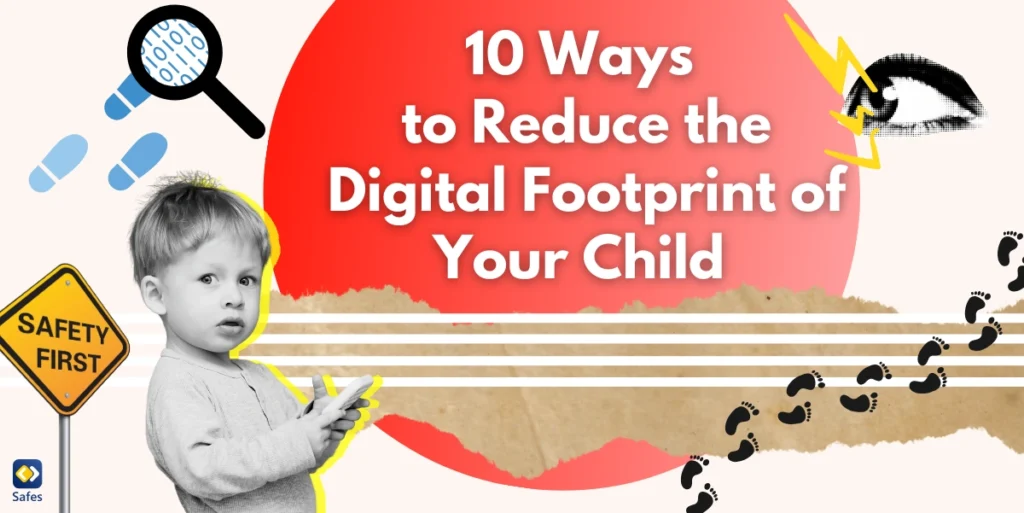As a parent, you’re never prepared for the moment that your child asks about death. This question can be especially overwhelming when it comes from a toddler. This situation can occur when you’ve lost someone to death or your child’s curiosity is developing. It’s difficult enough to lose someone, let alone having to explain it to your toddler in those circumstances. That’s why we’re going to help you by looking at different aspects of how to explain death to a toddler.
Download and Start Your Free Trial of the Safes Parental Control App
How to Tell Kids About Death
It’s not easy to talk to kids about death, but it’s important to do so in a way that is honest and clear.
Be Realistic
The best approach is to talk about death as a natural part of life — something that happens to everyone eventually. You can explain that death is something we don’t always understand, but it’s not something to be afraid of. It’s okay to feel sad when someone dies, but it’s also okay to celebrate the life of the person who has passed away.
When to Talk About Death
When talking to toddlers about death, you need to be sensitive to their age and level of understanding. For younger children, it might be enough to say someone died, and that they are not coming back. Older children might want to know more about death.
Actively Listen
It’s important to listen to your toddler when they are expressing their emotions about the death of a loved one. This can be a difficult and sensitive topic, but it’s important to be open and honest with your child. They might have a lot of questions and you must be patient and answer them accordingly. If you are not sure how to discuss the subject, you can always consult a professional.
Expressing Your Own Feelings
It’s perfectly acceptable – and natural – for you to express your sadness in front of your child. If you’re sad and crying, tell them how you’re feeling and reassure them that there’s nothing wrong with expressing your feelings in front of others. This will assist children in better naming, experiencing, and expressing their own feelings. This provides a sense of empathy and shows your child that they are not alone.

Grief of Small Children
Unicef states that small children under the age of five frequently don’t understand that death is permanent. They may wonder whether the person who has died will return. They may exhibit other behaviors such as clinging to their caregiver or regressive behaviors such as bedwetting. These behaviors are very common and usually stop after a certain time.
It can be difficult to explain death to a 3- or 4-year-old child. One way to approach the subject is to explain that everyone dies eventually and that it’s a natural part of life. According to psychologist Dr. Lisa Damour, you can tell them that when a person dies, their body stops working and they can no longer breathe, eat, or move. You can also explain that death is permanent and that the person who has died will never come back. It is also helpful to answer any questions they may have. You can explain that people die for different reasons, such as old age, illness, or accidents. You can also reassure them that they are not going to die anytime soon.
If a child is struggling to understand death, you can try using analogies or stories to help them grasp the concept. No matter how you approach the subject, it is important to be patient and understanding. Death is a difficult concept for anyone to grasp, let alone a child under the age of five. By taking the time to explain it in a way that they can understand, you can help them to come to terms with this difficult reality.

How to Explain Death of a Pet to a Toddler
Breaking the bad news to children may be one of the most difficult aspects of losing a pet. Try to do it one-on-one in a place where they will feel safe and comfortable, and where they will not be easily distracted.
Consider talking to children before your pet dies if it is very old or has an illness. If you must euthanize your pet, you should explain:
- The veterinarians have done everything they can
- Your pet will never get better
- This is the most compassionate way to relieve it
- The pet’s pain will end as it will die peacefully, without feeling hurt or scared
Many children want to say their final goodbyes before losing their pet, and some may be old enough or emotionally mature enough to comfort the pet during the process. If you must euthanize your pet, avoid using phrases like “went to sleep” or “got put to sleep.” Young children tend to take things literally, so this can conjure up frightening images of sleep, surgery, and anesthesia. If the pet died unexpectedly, explain what happened calmly. Allow your child’s questions to guide how much information you provide.
Conclusion
No matter how you choose to talk to your toddler about death, the most important thing is to be open and patient with them. Death is a part of life, and kids must learn to deal with it in a healthy way. If you want to learn more parenting tips, you can take a look at the Safes’ blogs. Safes is a parental control app that helps parents monitor their children’s online behavior and reduce the pressure of parenting in the digital age. It is available for Android, iOS, Windows, and Macbook. Try Safes for free today and take the first step towards a safer digital environment for your child.
Your Child’s Online Safety Starts Here
Every parent today needs a solution to manage screen time and keep their child safe online.
Without the right tools, digital risks and excessive screen time can impact children's well-being. Safes helps parents set healthy boundaries, monitor activity, and protect kids from online dangers—all with an easy-to-use app.
Take control of your child’s digital world. Learn more about Safes or download the app to start your free trial today!




